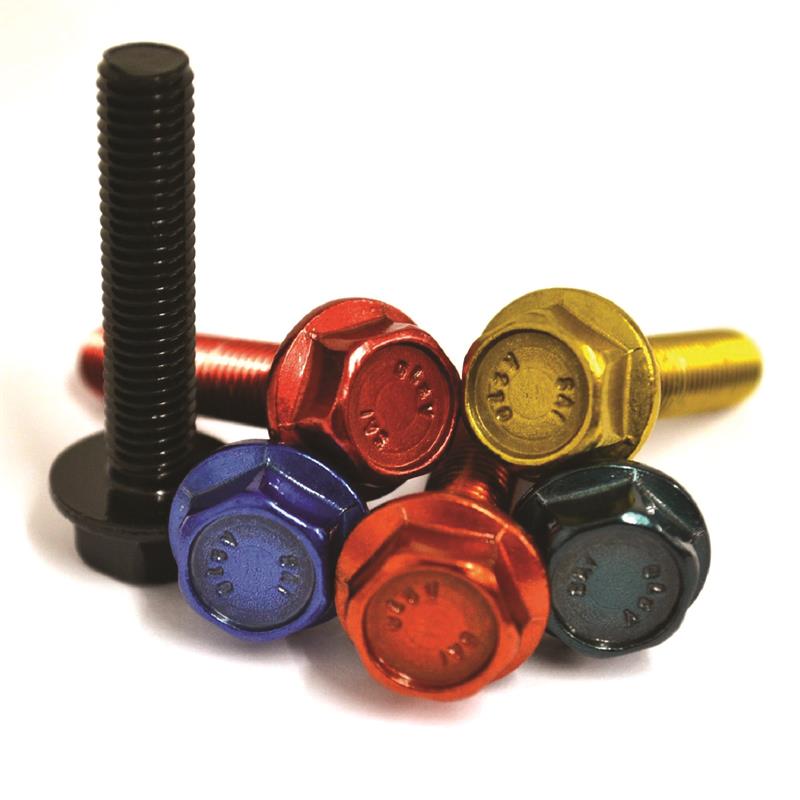It’s hard to be innovative in a mature market. As many industries evolve by adding intelligence to develop ‘smart’ products, the humble fastener is one of the few components that remains, at its core, unchanged. It is still a pure mechanical component, a rarity in today’s industrial universe. While bespoke fasteners form the critical backbone of many industries, it’s an extremely competitive sector. So, surely starting a fasteners’ company, at the height of the recession, from scratch, is going to be near impossible, isn’t it?
“Well, it certainly wasn’t easy,” said Jude Robinson, commercial director at GWR Fasteners. The company started in 2009 from humble beginnings, acting as a distributor from the couple’s home in Shropshire. “What we did was start small by selling on eBay.”
The company was highly commended at last year’s British Engineering Excellence Awards where judges commented that, ‘as well as distributing standard fasteners and having a global customer base, GWR has been able to achieve product development and expand current markets in an area that many consider mature.’
Originally the fasteners it supplied were speciality and low volume, but fast forward six years and the company has over 80,000 completed transactions through its eBay store and stocks thousands of products. It has moved well beyond being just another bespoke fasteners distributor.
The business has embraced new technology to develop its business by patenting innovative fasteners. Founder Gary Robinson, a toolmaker by trade, now has two CNC machines at his disposal to manufacture one off bespoke fasteners for clients that need unusual threads, heads, shanks, or dimensions, either for some custom application or to replace fasteners that have become obsolete.
“We get all kinds of requests and have identified many gaps in the market we didn’t even know existed,” said Robinson. “If we can’t source it off the shelf, we can make it.”
Identifying market niches is one thing, but this soon led to a moment of ingenuity that would really set the company apart from the more established competition. A client was using standard off the shelf coloured anodised aluminium fasteners to add to the styling of customised motorbikes. These coloured fasteners are reasonably common in industry and are used in a variety of applications, most of which are to boost aesthetic appeal.

However, the limitation came when the fasteners were needed for anything that was carrying a load. The customer said to Gary Robinson, ‘it’s a shame you don’t do these in stainless steel as I need to use them in a particular place on my bike that is under stress, so it needs to be steel’.
This got the cogs turning in Robinson and, convinced there was a way to do it, he began experimenting and developing a similar finish for steel fasteners. After several months of development, Robinson was sure he had come up with a repeatable process to colour stainless steel. So what’s the secret?
“I can’t tell you the process, that’s our intellectual property,” said Robinson. “If you think of anodising, it basically applies a very thin coating on to the fastener. It’s a similar kind of finish, but it is not anodising.”
It has given birth to the GWR Fasteners Colourfast range. The fasteners have a thin coating applied to the steel substrate that is reportedly harder wearing than paint, is UV resistant, and non-corrosive. The result is coloured stainless steel and though not every colour is available, the Colourfast finish is available on any fastener and comes in black, blue, red, green, brass and copper.
Robinson said: “As far as I’m aware, we are the only company that do coloured steel fasteners like this. We are definitely the only ones that do the process that we do, to get the look that we do.”
The obvious question is, why not paint fasteners or powder coat them? “It is a lot more resistant to scratches and wear than painting,” said Robinson. “It is also UV resistance and provides an anti corrosive coating to the fastener.
“There is nothing else like it out there as far as I know. That is why we get lots of customers approaching us about the process. And it can be applied to any standard stainless steel we supply, or manufacture. And we can manufacture stainless steel spacers and apply the Colourfast technique to those as well. We even offer it as a service, where we can coat bespoke products as well. We have done that for food manufacturers.”

Being used in the food industry leads to the observation that the coating is non-toxic and it is ultra thin, meaning the dimensions of the fastener itself are not altered – often a problem when powder coating smaller dimensions. The samples supplied to us at Eureka were small, ranging from 10 to 40mm, with the coating applied in no more than a few microns.
The process does of course carry a price premium, which GWR say is in line with coloured anodised aluminium fasteners. While details on the process are closely guarded, it is known to be reasonably labour intensive, as each fastener needs to be individually prepared and coated.
“We can’t mass produce them,” said Robinson. “They are each individually done, so it is quite an onerous process, which is probably why no one else has gone down this processing route.”
Colourfast fasteners have been put to use on a host of applications well beyond motorbike customisation where the aesthetic finish of a fastener is important, but also structurally vital. “We get asked to do lots of different applications,” said Robinson. “It has been used by the military, pharmaceutical companies, in oil and gas, and even for bespoke architecture. The architect was designing the reception of a posh building and everything was being done in a copper colour. So when the lift opened they wanted all the screws and fixings to be matching.
“Another recent customer used them as he was designing and building helicopter drones and wanted them as a feature on the design. The uses are boundless.”











